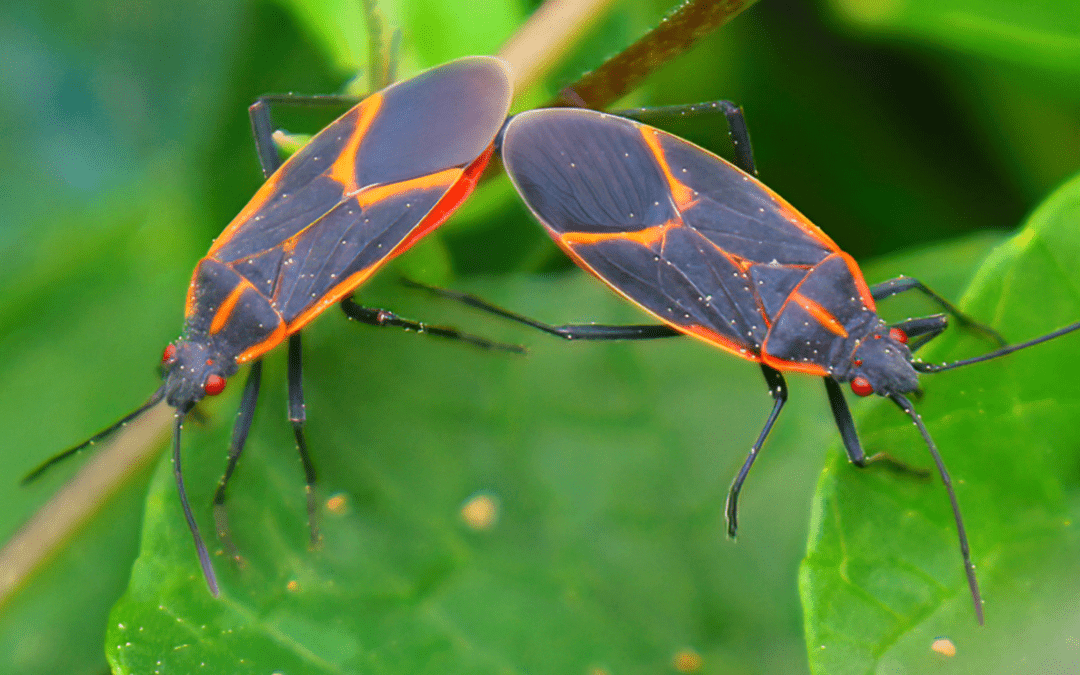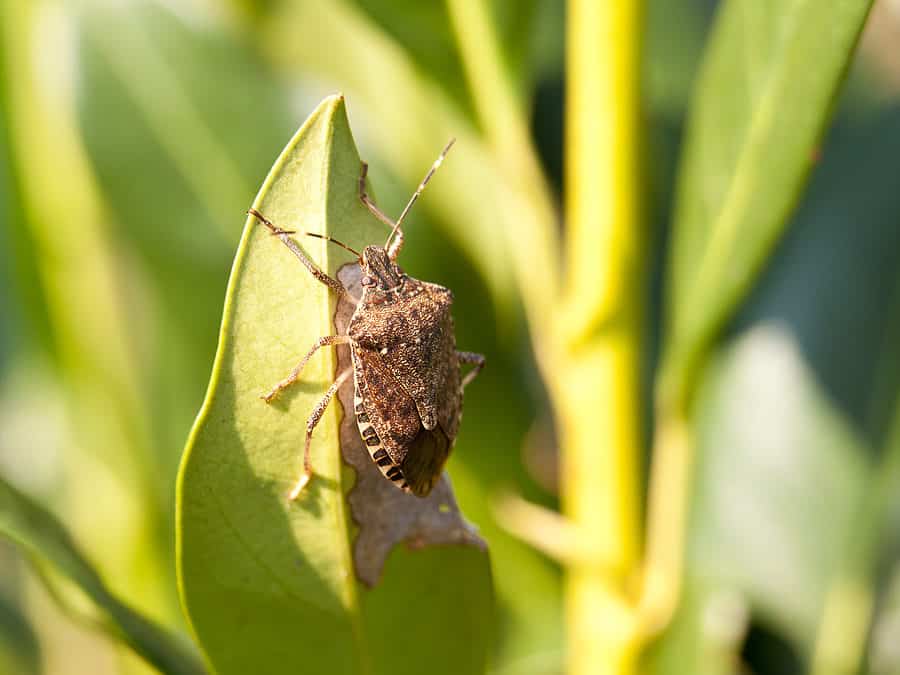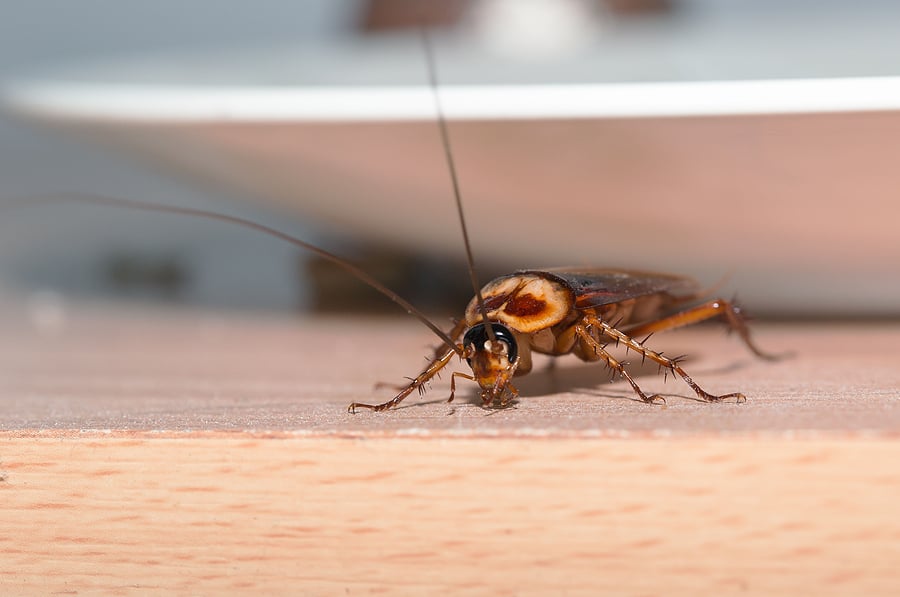READY TO GET STARTED?
REQUEST A FREE ESTIMATE
Fill out the form below or call (888) 466-7849 for a free, no-obligation estimate.

During the impending cooler months, some pests will begin seeking warmth and shelter for survival. These pests, known as overwintering pests, can survive cold temperatures due to these activities. There are three common overwintering pests: stink bugs, ladybugs, and boxelder bugs. They don’t cause any harm to you or your home, but they can become a nuisance once they get inside. Let’s break them down and discover the best ways to keep them away from your home.
These armor-shaped insects are an invasive species known to release an odor when disturbed or crushed. They pose no threat to humans or the structure of your home but can become a nuisance when an infestation occurs. They feed on a variety of plants, including fruits like apples, peaches, and figs. They prefer moist, mild climates and can be found in bathrooms and kitchens.
These harmless, overwintering pests are found worldwide and have over 5,000 known species. Ladybugs have an oval, dome-shaped body with a hard-shell wing that covers their inner wings. They are deemed beneficial and consume plant-eating insects, such as aphids, mealybugs, mites, and scale insects. During the colder months, they search for warmth and shelter. They can take over your home in a matter of days and can become a major nuisance when large populations congregate.
These pests are named for feeding off maple and seed-bearing boxelder trees in the warmer months. Boxelder bugs are sneaky pests that can easily make your home theirs. These pests are oval-shaped and elongated, with a reddish black body and orange markings on their back. They are considered more assertive than other overwintering species, puncturing skin when they feel threatened. The result is similar to that of a mosquito bite, so it shouldn’t be something to worry about.
If you suspect you have an overwintering pest infestation, contact a professional, local pest control company to provide you with a thorough evaluation and treatment plan.

Overwintering is a common term used to describe pests and their activities that allow them to survive the colder temperatures. Overwintering pests will often seek comfort and shelter in homes and buildings because of their warmth. These pests can be especially sneaky and if you don’t take preventative measures as they can infest quickly. Here are some common overwintering pests and some easy do-it-yourself pest control tips to keep them outside of your house.
Stink Bugs
Stink bugs can infest homes in large numbers, especially during the fall. You can often find these bugs on the side of your home, where they can receive the most sunlight to keep warm. While these bugs aren’t harmful to humans, if crushed, they will emit an unpleasant odor.
Boxelder Bugs
One of the more aggressive species of overwintering pests, the boxelder bug has mouthparts are both piercing and capable of puncturing the skin if being handled. This can cause slight irritation and produce red spots, like mosquito bites. Crushing these bugs is not recommended, as their bodies will produce a strong odor and remains can leave a reddish stain on fabrics.
Lady Bugs
Ladybugs are considered harmless and deemed beneficial. They will often consume plant-eating insects such as aphids, mites, and scale insects, all of which can harm crops and plants in gardens; though if they invade your home, they can become a nuisance and can be difficult to get rid of.
Overwintering Pest Protection Tips

Some pests hibernate when the weather gets colder, while others seek out warmth inside of our homes. These overwintering pests will sneak through any open crevice or gap from the exterior of your home and can stay there all winter long undetected. Here are a few crawly pests that could be hiding out in your house!
German Cockroaches
The German cockroach is a common roach species found throughout the world. These roaches range from 1/2 to 5/8 inches and are brown with two-longitudinal stripes running down the thorax. They prefer to live in smaller areas close to food and moisture, such as inside pantries, basements, and bathrooms. Roaches are dangerous as they can contaminate food sources, spreading bacteria and human pathogens by leaving their fecal matter and other debris in and around food and food preparation areas.
To prevent cockroaches, make sure you keep your kitchen counters clean and free of crumbs. Vacuum frequently and always dispose of the garbage regularly. Look out for any leaks in the kitchen and bathrooms, as this moisture will attract roaches.
Brown Recluse Spider
Measuring the size of a quarter, the brown recluse spider can exist in large numbers. These spiders have six eyes arranged in three pairs, which is quite different from other species of spiders that have eight eyes arranged in two rows. The brown recluse prefers to live in dark areas such as under furniture, in wall voids, basements, crawl spaces, and in closets. While these spiders typically spin their webs in darker places, they can also found in cardboard boxes, along window molding, and even in shoes. The brown recluse can be dangerous to humans, as they will bite and inject venom if disturbed or threatened.
To prevent these spiders from entering your home, keep the trees and shrubs trimmed away from the house and roof. Repair any loose siding or shingles as they can easily sneak in through any gaps and openings. Consider installing a mesh cover or cap over chimneys to prevent entry.
Bed Bugs
Bed bugs are 3/16” to 1/4” in length or about the size of an apple seed or a pencil eraser. They are long and brown, flat in shape with an oval-shaped body, and brown in color. These pests enjoy harboring in cracks and crevices during the day and will come out at night to feed. You will typically find them in beds, mattresses, box springs, rails, headboards, and footboards. Bed bugs will bite humans on areas of skin that are exposed during sleep. Bed bugs are also notorious for hitchhiking from place to place through luggage, following you back home after traveling.
To prevent bed bugs, routinely check linens, mattresses, and even pet beds for live bugs. Thoroughly inspect any used furniture before bringing it inside your home. If you have recently travelled, inspect your luggage before bringing it inside your home, immediately take your clothes out and wash them in hot water, and dry them on high heat.
If you suspect that you have any of these pests inside your home, consider reaching out to your local pest control company where they can help identify, inspect, and provide a prevention plan.